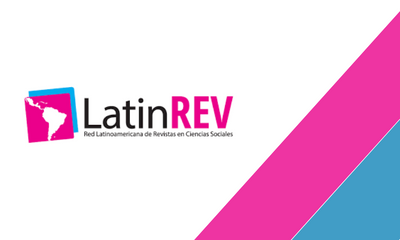Análisis microgenético para la enseñanza de complementos infinitivos y gerundios en inglés como L2 con estudiantes mexicanos universitarios: un estudio cualitativo
DOI:
https://doi.org/10.32870/vel.vi23.230Keywords:
complementos de infinitivo y gerundio, gerundio, consciencia metalingüística, perspectiva socioculturalAbstract
Abstract: Throughout the article, the process of developing metalinguistic awareness of infinitive and gerund complements in English as L2 with Mexican university students is presented to facilitate their acquisition in a collaborative, reflective and introspective context. The study takes as a support framework a sociocultural theoretical perspective that is oriented from a microgenetic analysis to promote the use and conscious manipulation of grammatical rules. Given that previous studies suggest inquiring more with young university students, addressing collective motivational perspectives, and exploring with qualitative approaches, it is intended to explore the origin and changes implemented by sixteen Mexican university students of the Bachelor of Modern Languages in English through individual and decontextualized analysis of sentences in L2 to detect usage patterns and collectively suggest grammar rules. The findings could reveal the possible cognitive factors that link the acquisition of infinitives and gerunds as direct objects in L2 through interaction and collective reflection. These results would have direct implications in the investigation of the metacognition of Mexican university students.
Downloads
Metrics
References
Al-Gburi, M. B. (2019). The Effective Ways and Methods of Teaching the Differences between Infinitives and Gerunds. Dirasat Tarbawiya, 12(48).
Altman, C., Goldstein, T., & Armon-Lotem, S. (2018). Vocabulary, metalinguistic awareness and language dominance among bilingual preschool children. Frontiers in Psychology, 9(OCT), 1–16. https://doi.org/10.3389/fpsyg.2018.01953
Barrios, Alia, Barbato, Silviane, & Branco, Angela. (2012). El análisis microgenético para el estudio del desarrollo moral: consideraciones teóricas y metodológicas. Revista de Psicología (PUCP), 30(2), 249-279. Recuperado en 05 de diciembre de 2021, de http://www.scielo.org.pe/scielo.php?script=sci_arttext&pid=S0254-92472012000200002&lng=es&tlng=es.
Bialystok, E., Peets, K.F., & and Moreno, S. (2014). Producing bilinguals through immersion education: Development of metalinguistic awareness. Applied. Psycholinguistics. 35,177–191.
Chalabian, F. (2020). ESL textbooks materials and real language use: Comparing corpus-based materials and textbook materials on gerunds/infinitives (Doctoral dissertation, Carleton University).
D’Angelo, F., & Sorace, A. (2022). The additive effect of metalinguistic awareness in third or additional language acquisition. International Journal of Bilingual Education and Bilingualism, 25(10), 3551-3567.
Ellis, R. y N. Shintani. (2014). Exploring Language Pedagogy through Second Language Acquisition Research. London: Routledge.
Fotos, S. S. (1994). Integrating grammar instruction and communicative language use through grammar consciousness?raising tasks. TESOL quarterly, 28(2), 323-351.
Gánem-Gutiérrez, G. A. (2016). Enhancing metalinguistic knowledge: Preterite and imperfect in L2 Spanish. Language and Sociocultural Theory, 3(1), 27–54. https://doi.org/10.1558/lst.v3i1.28803
Harun, H., Abdullah, N., Wahab, N. S. A., & Zainuddin, N. (2017). The use of metalanguage among second language learners to mediate L2 grammar learning. Malaysian Journal of Learning and Instruction, 14(2), 85–114. https://doi.org/10.32890/mjli2017.14.2.4
Kieseier, T., Thoma, D., Vogelbacher, M., & Holger, H. (2022). Differential effects of metalinguistic awareness components in early foreign language acquisition of English vocabulary and grammar. Language awareness, 31(4), 495-514.
Lantolf, J. P. (2008). ‘Praxis and classroom L2 development.’ Estudios de lingüística inglesa aplicada 8: 13-44.
Naqvi, R., Thorne, K., McKeough, A., & Pfitscher, C. (2010). Building bridges: Acknowledging children’s first languages: Final report May 2010.
Negueruela, E. (2008). ‘Revolutionary pedagogies: learning that leads (to) second language development’ in Lantolf J. P. and M. E. Poehner (eds.): Sociocultural Theory and the Teaching of Second Languages (pp. 189-227). Equinox, London.
Pao, M. (2020). Communicating in the Face of Racism: Infinitive v. Gerund Verbal Complements in English. GATESOL Journal, 30(1), 80-90.
Ramirez, G., Walton, P., and Roberts, W. (2013). Morphological awareness and vocabulary development among kindergarteners with different ability levels. J. Learn. Disabil. 47(1), 54—64. doi: 10.1177/0022219413509970
Rossetti-Ferreira, M. C.; Amorim, K. S.; Soares-Silva, A. P. & Oliveira, Z. M. R. (2008). Desafios metodológicos na perspectiva da rede de significações. Cuadernos de Pesquisa, 38(133), 147-170.
Sampson, A. E. (2019). Languaging and learning compared across EFL course delivery modes. (Doctoral dissertation, Lancaster University, United Kingdom).
Tjabaka-Mokapane, L. (2023). Categorial Conflict between Phrasal-Prepositional Verbs and Infinitives: The Great Complement Shift. Elsya: Journal of English Language Studies, 5(2), 159-172.
Tunmer, W. E., & Herriman, M. L. (1984). The development of metalinguistic awareness: A conceptual overview. Metalinguistic awareness in children: Theory, research, and implications, 12-35.
Vygotsky, L. S. (1987). The Collected Works of L. S. Vygotsky: Vol. 1. Problems of General Psychology. Including the Volume Thinking and Speech. Reiber, R.W. and A.S. Carton (eds.). Plenum, New York.







